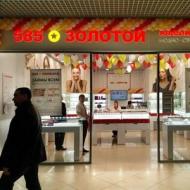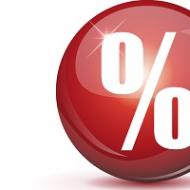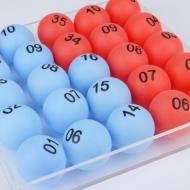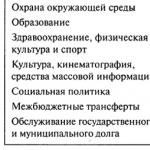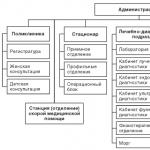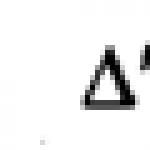
What is a debit card: what is it for and how to choose it. Bank payment card - what is it? Bank payment card
A payment card is a debit bank card that is used for payments due to own funds its owner.
In terms of the execution method, the payment card does not differ from others: standard ISO 7810 - 12, dimensions 85.6x53.98 mm.
An individual card number consists of 16 or 19 digits. They also have the required for online payments. Like everyone else bank cards settlement is protected by a PIN-code.
Purpose of payment cards
Payment cards are needed primarily for:
- Cash substitutions for payments;
- Saving funds on the account of the cardholder;
- Withdrawing cash from a card account.
Payment by bank card consists of a transfer Money from the owner's card account to the merchant's account. In essence, this is not much different from paying in cash to the cashier.
The technical details of a payment card payment look like this:
- The card is inserted (in some "advanced" devices - attached) into the reader;
- The payer enters the PIN-code;
- The device sends a request to the bank that issued the card to withdraw funds from the account of its owner;
- Upon successful debiting, the addressee of the payment (the merchant) receives information from the bank to the device paired with the card. The operation is recognized as completed
- If the card account is blocked, insufficient funds on it, problems with the connection between the card and the bank, the payment operation is not performed.
The next, very popular function of payment cards is cash withdrawal. The technology of such withdrawal is in many ways similar to the payment described above.
- The card is also inserted into the reader (in in this case- ATM);
- Pin code is entered;
- In the list of proposed operations, select "Cash withdrawal";
- The withdrawal amount is determined;
- The ATM receives information from the bank that issued the card about the sufficiency of funds on the card account and the possibility or impossibility of debiting funds;
- If the answer is yes to these questions, it issues cash, a receipt for the operation and completes it.
Payment cards classification
All the set issued by banks can be divided according to different criteria. The most significant are:
- Payment system classification;
- The functional level of the card - i.e. the number and complexity of the available operations;
- The degree of protection of the card;
- Payment system on which the map is based.
In this case, payment systems mean global brands plastic cards, such as
The employee's personal account is an internal document of the employer containing information on all types of payments and deductions from the employee's salary.
A personal account is opened by an accountant after the employee has been hired and is maintained by him throughout the employee's labor activity. Data is entered based on primary documents for accounting of production, work performed, hours worked and documents for different types payments.
Such documents, in particular, include:
- time sheet (form T-13);
- route and waybills;
- orders;
- sick leave;
- production reports;
- piecework orders;
- other documents.
Based on the personal account data, it is subsequently filled in payroll in the form of T-49.
Employee personal account form
Personal account is maintained in two forms:
- T-54 - unified form of the card personal account... As a rule, the specified form is used to record wages for large enterprises and organizations. Small organizations and individual entrepreneurs most often use unified form T-49, which is both a settlement and a payroll.
- T-54a is a form of a personal account card for electronic accounting.
Note: if the employer uses a T-51 sheet to calculate wages, then a personal account in the T-54 form is not drawn up.
How to fill in an employee's personal account
General requirements for filling
- Data on the card is entered in blue or black ink.
- It is not allowed to make corrections, use corrective agents, including putty.
- The document consists of title page and a table containing 49 columns.
Instructions for filling out a personal account card
Title part: The very first lines containing information about the employer are filled in: the name of the organization (structural unit), the OKPO and OKUD code. Then information about the date of opening the account is entered, billing period and the employee himself.
Note: Information about the employee (TIN and SNILS number, marital status, number of children, date of employment) is entered on the basis of a personal card (T-2).
Columns 1-8... Contains data on hiring, transfers, dismissals, changes in wages. These columns reflect information about the order of employment (dismissal, transfer), etc., place of work ( structural subdivision), position (specialty, profession), tariff rate, the amount of allowances and surcharges.
Counts 9-16... Contains information about the employee's vacation: the period for which the vacation was granted, the duration, date and number of the order that approved the vacation.
Counts 17-21... These columns reflect information about deductions in relation to the employee (by enforcement orders, clerical documents, etc.).
Box 22... The column indicates the amount of the tax deduction provided to the employee.
Box 23... The month for which the invoice is drawn up is indicated in the format: 01, 02, 03, etc.
Counts 24-27... The indicated columns reflect the days (hours) worked by the employee in the reporting month. The data is taken from the timesheet.
Counts 28-37... All accruals made to the employee for the reporting month are indicated: wage, bonuses, sick leave, vacation pay and other payments.
Counts 38-46... Deductions in relation to the employee are reflected: personal income tax, alimony, advances, etc.
Counts 47-48... The indicated columns reflect the debt of the organization to the employee and vice versa: the employee to the organization.
Box 49... The total amount of payments to the employee for the reporting month is indicated.
Sample of filling out an employee's personal account
Employee's personal account card in form T-54 (
Payment cards have already become a common method of payments with various additional functions... In order not to get confused in the wide range of offered cards, you need to start with the fact that there are two main types of payment cards - payment and credit. How do they differ from each other?
Payment cards
The name indicates the main function of these cards - the ability to pay in shops, cafes, airlines, hotels and in any other place where there is a device that reads information from the card (POS terminal). Payment card also allows you to shop online and find out how much money is on bank account... With this card, you can use your personal money that is deposited into the account, for example, salary, benefits or royalties.
Today, both payment and credit cards can be personalized by choosing a special design for them, as well as by choosing a function that provides contactless payments when it comes to small amounts- the card does not need to be inserted into the POS terminal and the PIN code must be entered. In addition, the contactless function can be turned off altogether if it seems unnecessary.
It is not uncommon for parents to choose payment cards for their child so that their first financial experience is safe and visual.
Credit cards
Credit card in addition to the functions of a payment card, it allows you to use the credit limit established by the bank up to 200% of monthly income. This allows for larger purchases and also makes life easier while traveling by allowing hotel and airline reservations, automatically converting money into local currency and providing the option to purchase additional travel insurance on favorable terms.
Usually credit card is also needed in order to rent a car - both for payments for this service and as a security guarantee, since it is a convincing proof of solvency. A credit card, just like a payment card, can be personalized by choosing an individual design and used for contactless payments for small amounts.
A credit card is a kind and a matter of prestige. For example, in the sentence Mastercard cards World Elite includes both the services of a personal assistant abroad and priority security control at the airport. Even the restrained design of this card testifies to a certain exclusivity.
It should also be borne in mind that credit cards usually have a higher (compared to settlement) fees for withdrawing cash from ATMs.
How to distinguish between cards?
Sometimes even the merchants themselves confuse payment and credit cards or do not see the difference between the mini. For example, in stores that do not accept cash, you can still see the inscription “we only accept credit cards”, although in reality we are most likely talking about payment cards in general (regardless of their type).
At the same time, it is very easy to distinguish a payment card from a credit card, it must be written debit (payment card) or credit (credit card). Highlighted letters or other features are no longer considered the distinguishing mark of a particular type of card.
Which card should you choose?
People and their habits are so different that there is no one answer to this question. For some, prestige and travel insurance are important, for others - the ability to pay using the contactless payment function. The optimal package would consist of a payment card linked to the day-to-day payroll account and a credit card for more large purchases, unexpected expenses and travel.
Payment cards of international organizations Visa and Mastercard are now accepted in most countries of the world, but there are still merchants who prefer cash transactions, so it is worth stocking up on them.
The choice of the card is determined by different life situations and it is good that we can choose the appropriate calculation options for this.
Janis Meistars



